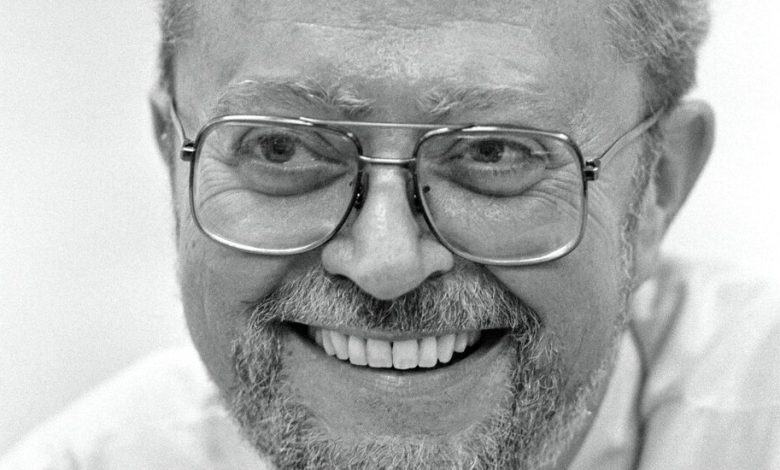William G. Connolly, Editor Who Updated The Times, Dies at 85

William G. Connolly, who over a long career as an editor at The New York Times raised its journalistic standards, opened new opportunities for a more diverse range of employees and in 1999 brought that experience to bear in a wholesale revision of the newspaper’s venerable style guidebook, died on Tuesday in Maplewood, N.J. He was 85.
His daughter, Kathleen, confirmed the death. He was in a rehabilitation facility recovering from a fall, she said.
After more than 20 years at The Times — minus a few in the early 1980s, when he left to work at a Virginia paper — Mr. Connolly was elevated in 1987 to a new senior position in which he managed training and recruitment.
In that role he oversaw the paper’s ethical guidelines, brought in new faces from a broader pool of applicants and turned a critic’s eye to the newspaper’s daily output with a newsletter that he took over called “Winners and Sinners.”
He kept his colleagues to high standards, but also entertained them with his dry wit and punctuational preferences; he especially loved the semicolon.
He was, in short, a natural choice to join his friend and fellow editor Allan M. Siegal a decade later in the herculean task of revising the venerable “The New York Times Manual of Style and Usage,” which had been in use for decades not just within the newspaper but by hundreds of other publications and countless students and nonprofessional writers.
But the book had not been touched in decades, and its timeworn entries reflected a vanishing analog world dominated by white men.
Working out of an unused radio studio in the newspaper’s old offices on West 43rd Street in Manhattan, Mr. Connolly and Mr. Siegal, an assistant managing editor, meticulously reviewed and rewrote the manual’s thousands of entries, expanding what had been a slim book to 365 pages, organized from A to Z.
Rather than dictate the terms used to define a group of people, they ruled that the newspaper should use the words those people preferred. They also put to rest a debate over whether it was ever acceptable to use certain racial slurs, even in a quotation (no).
Mr. Connolly was particularly irked by the old manual’s use of a single English male name — John Manley — in all its examples. He replaced them with a long list of surnames, all of which mean “Lamb” in different languages: Cordero (Spanish), Agneau (French) and Kikondoo (Swahili), among others.
“He kept track of them on a spreadsheet,” Merrill Perlman, a former Times editor who assisted Mr. Connolly on the book, said in a phone interview. “He didn’t want to overuse them.”
Mr. Manley, once ubiquitous across the manual, survived in just one spot: the entry for obituaries.
William Gerard Connolly Jr. was born on Oct. 12, 1937, in Scranton, Pa. His father worked for the U.S. Post Office, and his mother, Loretto (Blewitt) Connolly, was a teacher.
He studied philosophy and English at the University of Scranton, graduating in 1959, and then entered the U.S. Army. He spent three years as a news announcer and disc jockey for Armed Forces Radio from its offices in New York City.
Remaining in New York, he worked as a copy boy at The Times while studying for a master’s degree at Columbia University’s school of journalism. After graduating in 1963, he worked brief stints at a long list of newspapers — including The Minneapolis Tribune, The Houston Chronicle and The Detroit Free Press — before returning to The Times in 1966.
He married Clair Connor in 1964. She died in 2013. Along with their daughter, he is survived by his sons, William G. Connolly III; Harold Connolly; three grandchildren; and his sister, Sister Jane Marie Connolly.
Though he wrote his fair share of news articles, Mr. Connolly was primarily an editor, with postings on the foreign desk, The New York Times Magazine, the real estate section and the metropolitan desk. He was also the founding editor of the Science Times section.
He left in 1979 to become the managing editor of The Virginia Pilot, in Norfolk, Va. In 1981, he started teaching for the Maynard Institute, which ran a summer program in Tucson, Ariz., that trained journalists of color for jobs as copy editors.
By the mid-1980s The Times was coming under both public and internal criticism for its stodgy editorial style and lack of diversity in its staff and its coverage, and Mr. Connolly, with his particular combination of management experience and insider awareness of Times culture, was a logical candidate to begin turning that around.
He returned as an assistant editor on the national desk and then as deputy editor of The Week in Review section, though in both posts he was given the added mission of helping to open up the newspaper to a broader cohort of employees.
After his promotion to senior management in 1987, he created the news department’s first management-training program. And he brought in a new generation of editors, not just more racially diverse but from a wider variety of backgrounds and experiences.
His work with Mr. Siegal to revise the stylebook was his last major project at The Times before retiring in 2001, though he continued to consult on future revisions, which kept their names as authors.
“This manual reflects The Times’s impression of its educated and sophisticated readership — traditional but not tradition-bound,” they wrote in their introduction. “Throughout, the goal is a fluid style, easygoing but not slangy and only occasionally colloquial.”
